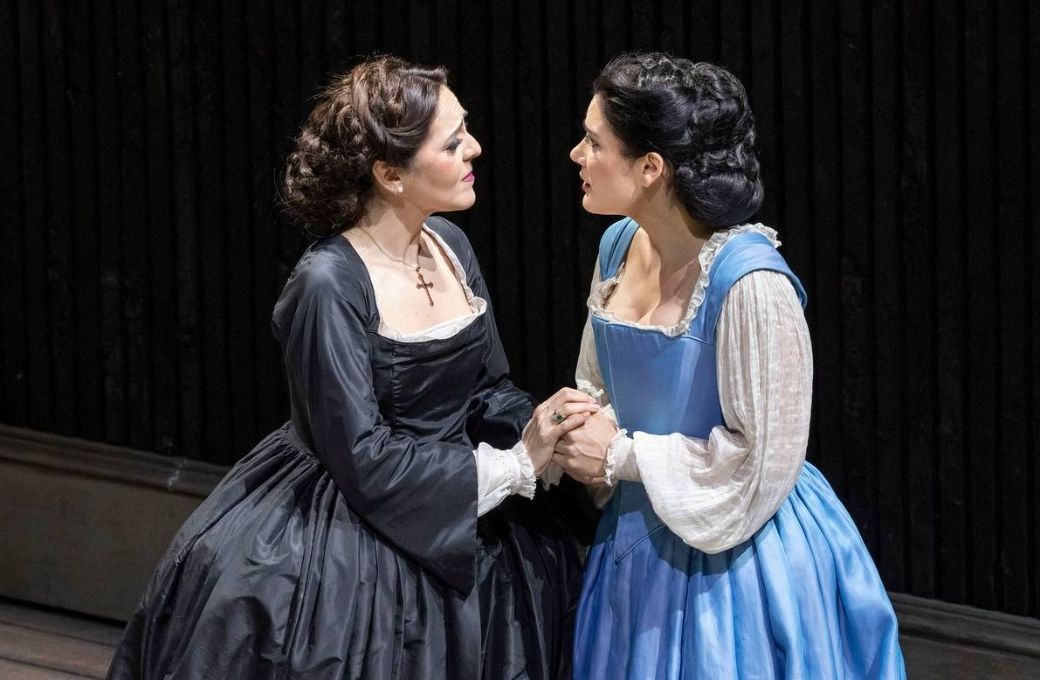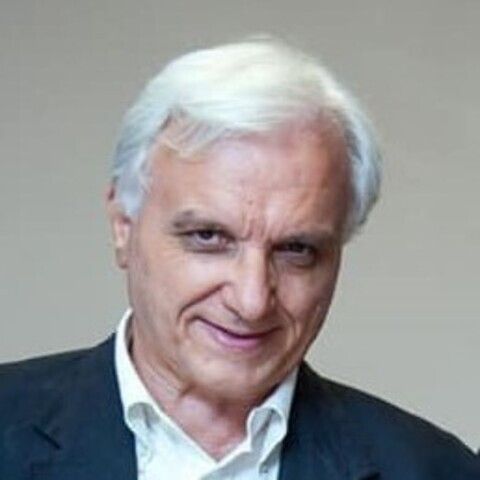Jetske Mijnssen's Anna Bolena is a co-production between the Teatro di San Carlo, Dutch National Opera and the Palau de les Arts Reina Sofia in Valencia. In Naples, Donizetti's opera represents the first performance dedicated to the celebrations of Maria Callas' centenary as it was one of the roles she famously sang. The Dutch director is known for delving into the inner psychological complexities of her characters. Nonetheless, here she keeps things simple: it is all about queens. In the beginning, the reigning queen (Anna) is on stage without a crown; then her confidante and rival Giovanna Seymour soon rises from being the King's mistress to the rank of regent and, at the end, England's new queen.
However, there is a third queen, which Felice Romani's libretto does not mention: Henry VIII and Anne Boleyn's daughter, who would become Elizabeth I, a silent object of her parent's attention throughout the performance. The subtext of the staging resides in this clash of two parents over the love for their daughter.
Ben Baur's sets essentially feature a wall sliding occasionally from left to right, with massive wooden doors from where the characters and crowds enter. Klaus Bruns' costumes are adapted to the historical background, finely evoking a Renaissance style.
Maria Agresta embodied an unhappy woman who just happens to be the wife of the King of England and who ultimately has to lose her head because her husband desires another. Agresta offered good insights into Anna's personality, although vocally her timbre was not always clear. Once again, she sounded more of a dramatic Verdian soprano more than a coloratura singer. Russian bass Alexander Vinogradov portrayed a malicious and callous Enrico, as the role would have it. Nevertheless, his vocal performance was unremarkable, his singing lacking compactness of timbre and good diction.

However, the star of the evening was Italian mezzo-soprano Annalisa Stroppa, making her mark as Anna's rival, Giovanna. Stroppa's top notes were impressive, her middle register better than ever and her stage presence was stunning, as she gave life to the guilt-ridden Seymour. She demonstrated a warm timbre, beautiful burnished colours and ease in her high notes, not only in her splendid duets with Agresta and Vinogradov. Sadly, Mijnssen chooses to present Giovanna as a fragile victim of Enrico, thus limiting a character who should be more complex in desiring both Enrico's love and Anna's forgiveness.
All of the other roles were cast in the best possible way for the level of this performance and were performed very convincingly. The en travesti role of Smeton was suited perfectly to the excellent Caterina Piva, who sang and performed naturally and pleasantly. In addition, René Barbera was a good choice to interpret Riccardo Percy, with only his high notes a bit too nasal. Nicolò Donini gave a fine performance as Lord Rochefort, Anna’s brother.
Riccardo Frizza conducted the San Carlo orchestra and chorus with precision and involvement, and in many passages the audience enjoyed bel canto of the highest quality. Especially noticeable were the chorus, offering a very theatrical interpretation of the score and attentive to the singers. Finally, the ballet was pleasant in courtly dances, even if a bit excessive with odd movements and bizarre costuming at the final wedding.


